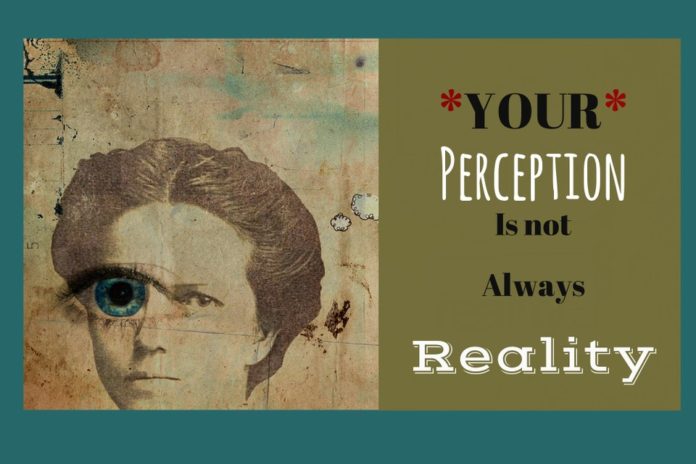What you see and what you hear depends a great deal on where you are standing. It also depends on what sort of person you are.” (C.S. Lewis)
I’m continually amazed by the perceptions that people have of each other. More often, it is based on what they see and believe based on that. As they get to know the person, the perception changes into something closer resembling reality. It is not uncommon for me to hear from people: “I had no idea that you were this <insert word>. I always thought you didn’t like me.”
Several months ago, I had someone come to me in anger because they felt I did not care for them and “pastors should care for everyone”. As I dug into the situation, their belief of me was based on the circumstances in which they encountered me. It became clear that they felt I didn’t like them because I had to tell them they couldn’t do something, and they felt I was judging their ability to parent because of it. I explained that I rarely form judgements of people based on what I see, because there is always more to every story. It grieves me when I see people make judgments without proper context or information or strictly from their own point-of-view.
That may be what C.S. Lewis meant in his quote. . . what you see and hear is really about your point-of-view and the kind of person you are. I realized a while ago that what most people think is in my head about them is really in their own heads about themselves. They believe they are a bad person or are afraid they are a horrible parent, and so believe everyone else thinks so. As a leader, this can be destructive to our influence because what we think often communicates itself in what we do and say. If we believe our team dislikes us, we will act out of that belief and, frequently, will sabotage ourselves in the relationships with them. If we don’t think they trust us, it is likely us who doesn’t trust them.
How do you fight this perception problem? I have found that seeking to understand where the perception comes from is the first step. Stephen Covey used to say that we should “Seek first to understand, then to be understood.” Seek to understand their perception and where it is coming from. With the individual I previously mentioned, their perception came from my tone and expression when I spoke to them. The only time they had longer conversations with me was when I was letting them know there was something they couldn’t do. I heard them, and also explained that I was addressing the issue because I did care for them and did not want them to have bigger issues because of how their actions were being viewed (neglect, etc.). That’s the second part: Dialogue. You need to work through the incorrect perceptions with the person so that you are able to see them as they are, not as they seem to be. When the individual understood where I was coming from and I understood what they saw, we both could address any issues and resolved the problems.
It doesn’t always work, but good leadership and successful teamwork requires dealing with incorrect perceptions. You may not be able to control what someone else thinks, but you can provide “the rest of the story” so the person can form perceptions from accurate information.
Original Author: Carol Conner






































